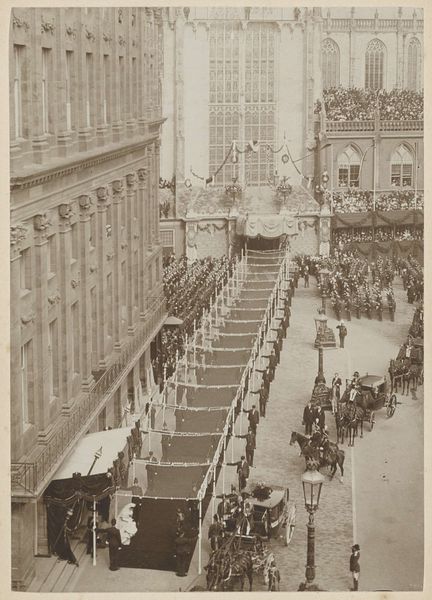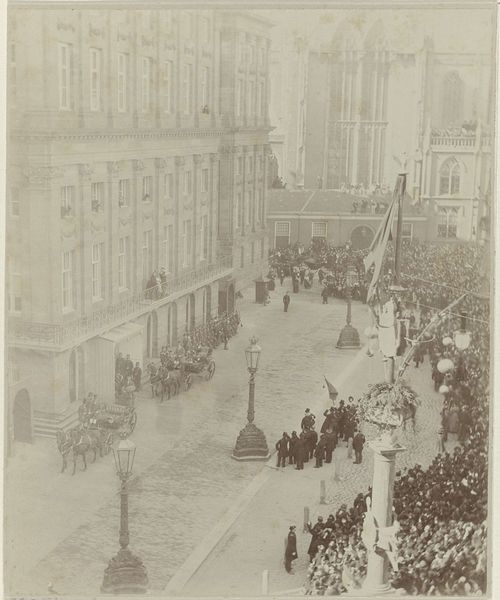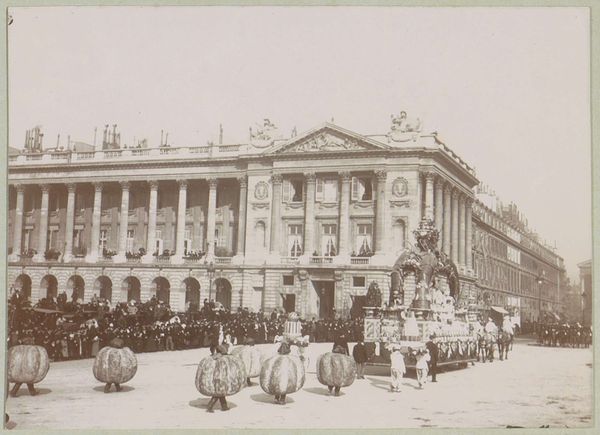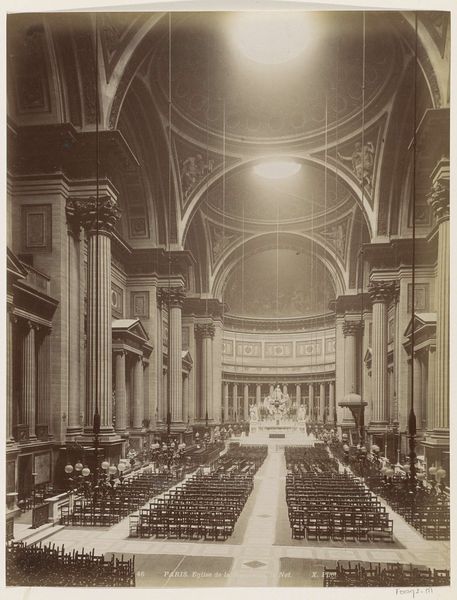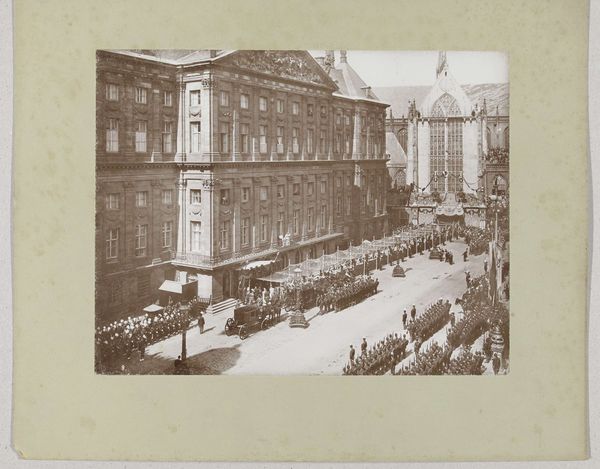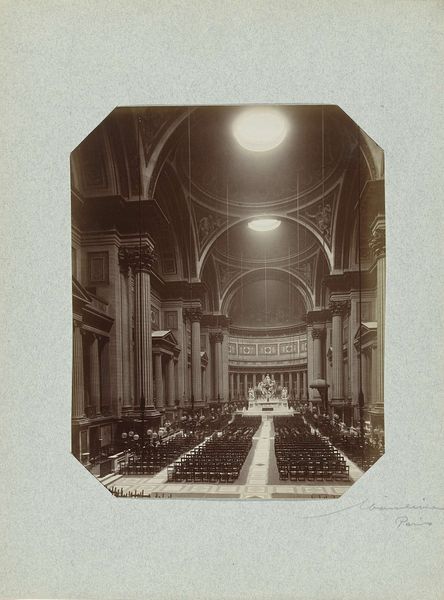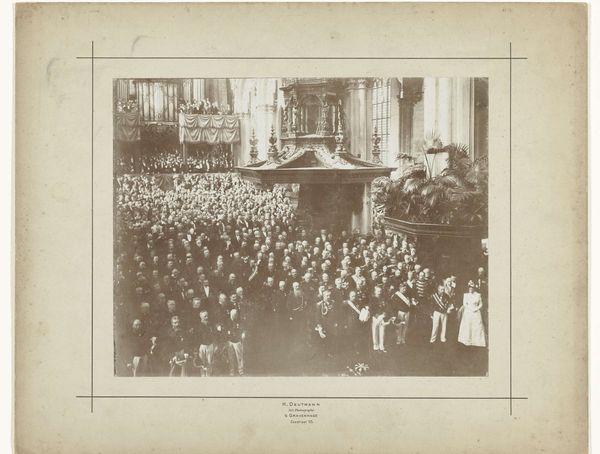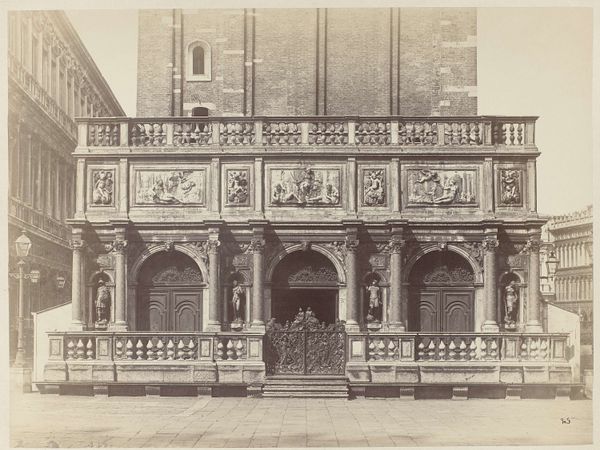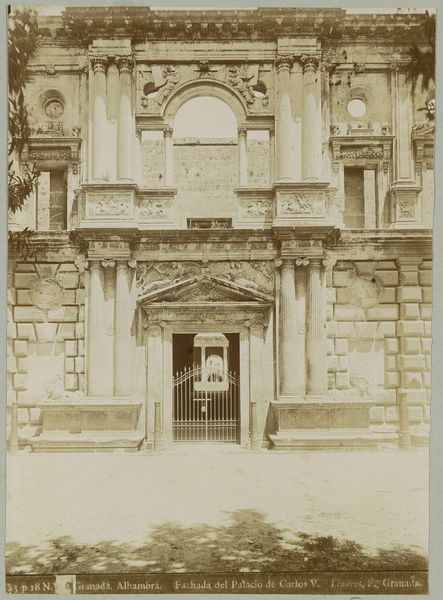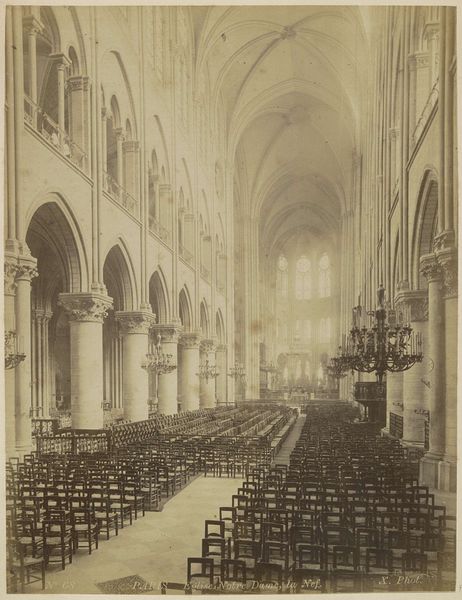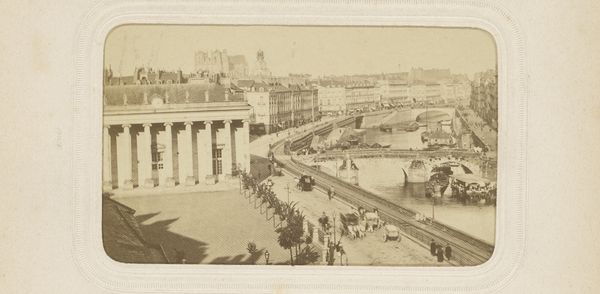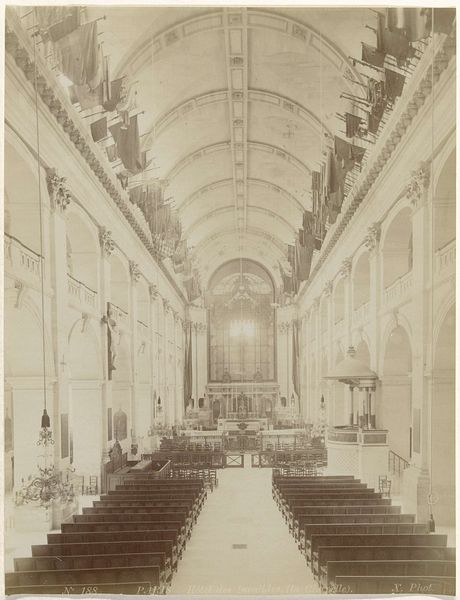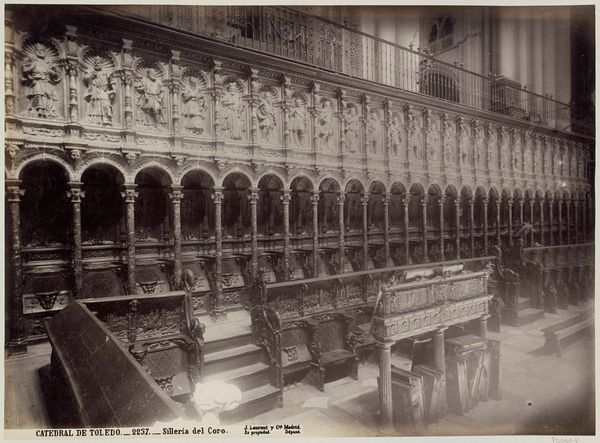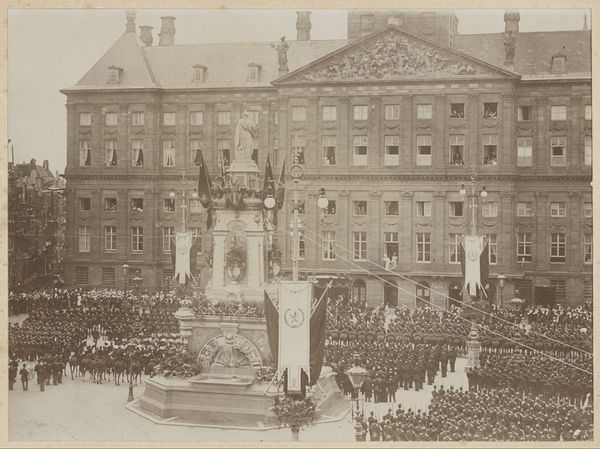
photography, gelatin-silver-print
#
landscape
#
photography
#
gelatin-silver-print
#
cityscape
Dimensions: height 171 mm, width 120 mm, height 189 mm, width 138 mm
Copyright: Rijks Museum: Open Domain
Curator: This gelatin-silver print, possibly created between 1898 and 1899 by Guy de Coral & Co., captures Queen Wilhelmina under a canopy on the Dam square in Amsterdam. It’s currently held in the Rijksmuseum collection. What’s your initial response to it? Editor: It's quite striking how the composition directs your eye down the seemingly endless procession. The use of light and shadow creates a real sense of depth, drawing you into the event. But tell me more about its context; who was Wilhelmina at this time and what might this event signify? Curator: Wilhelmina's coronation in 1898 occurred at a pivotal moment. As a young queen, she represented a continuation of the Dutch monarchy but also a figurehead for the shifting political landscape of the time. There was growing social unrest, coupled with developing labor movements. Editor: Yes, and this official portrayal perhaps served to bolster a sense of national unity at a time when Dutch society was facing considerable internal pressures, attempting to solidify ideas around royal symbolism. How does the cityscape play into that reading? Curator: Precisely. The photograph offers a carefully orchestrated display of power with the newly crowned Queen situated beneath the canopy. This event also symbolizes Amsterdam's centrality to Dutch identity, with Dam Square as the historical focal point of the country. And beyond Wilhelmina’s individual significance as queen, we can think about the implications of representing royalty itself during this historical period. Editor: Considering the medium, photography allows for both careful staging and the capture of candid details. Did the artists leverage photography here to highlight particular qualities about their subject, or the Dutch empire more broadly? Curator: This image’s strength lies in its ability to construct and negotiate collective identity during the emergence of a modern Dutch nation. It reminds us of the vital role images played in defining public identity during a period when photography was on the cusp of wider adoption and a changing political world. Editor: So, it’s an image invested with political weight—using perspective, light, and context to both capture a specific moment and contribute to constructing Dutch national identity. I find the image compelling now because it encapsulates complex and multiple layers of interpretation. Curator: Exactly, by recognizing how photographic language and symbolism work to influence public sentiment, we become more aware of the relationship between monarchal iconography and social progress.
Comments
No comments
Be the first to comment and join the conversation on the ultimate creative platform.
